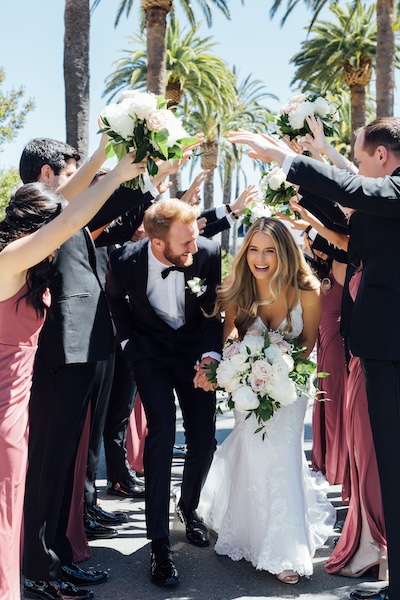10 Surefire Ways to Get Found Online
September 8, 2014
My first contact with search engine optimization left me thrilled by the thought that a random stranger could find my business online, contact me and book me. But I also soon discovered that SEO was like an old man’s country club: formal and full of rules.
I puffed, huffed, and twirled my hair until it formed a Shirley Temple curl, but I stuck to it. I learned SEO as a very hands-on, realistic, day-to-day approach, and then I founded the Get Found With Fuse program, a workshop teaching other photographers how to optimize their websites for SEO.
.jpg)
All photos © Feuza Reis
Almost all of my 100-plus former bootcamp students have one thing in common: they want to be found locally or in a particular city. But how do you rank locally and stand out? Especially when Google only gives ten spots per page, and awards higher rankings to the websites it thinks are the most appropriate matches for each search term.
If someone in your local area is searching online for a photographer, you want your business to show up on page one or two; and if someone from out of town, out of state, or out of the country is considering getting married in your region, of course you want to show up on that pretty little map that pops up first in the results.
We can rank in a few different ways, first with organic results, which are the natural results generated for a given search term. Also, we now have Google Plus, which posts results on specific topics if you are listed with Google, and the Map Results on Google Places. With all those ranking possibilities in mind, here are ten ways I suggest boosting local SEO and getting found online.
1. Add Location Text to Your Website
Sometimes when I visit a photographer’s website, it’s like searching for Carmen Sandiego: I have no clue where in the world they’re located. Ironically, photographers who are dying to be found by people in a desired city don’t have their location listed anywhere! I can understand some of the excuses: you work from home, or you really want to book jobs in the next town over. But it’s still essential to list—at the very least—the region or town you are servicing or the area in which your business is physically located.
Search engines can’t see videos or images; they only see the text that’s associated with those videos or images. So adding text—in this case, location text—is vital! (You can choose not to show your home address if you work from home.)
.jpg)
Add your location, the kind of photography you do and which regions you serve to at least three pages of your website. For example: “Feuza Reis is a Myrtle Beach Wedding and Maternity Photographer serving Horry County and Charleston, South Carolina. She is also available for destination weddings.” This kind of text should be on your homepage, your About page and your Contact page, if your site has all three.
Add your location information to the page titles and descriptions of your website and blog as well. Page titles is that text you see above someone’s URL, and description is the summary of someone’s site when you Google something and URL results appear. Your main page title should have your location text on your website and your blog, but vary the wording, otherwise your own pages will start to compete with each other.
.jpg)
To change your page title in WordPress:
A. In your WordPress dashboard, go to Settings, then General.
B. Make sure there is no text in the Tagline area.
C. Add text to your site title with separate keywords using the vertical bar or pipe symbol (“|”). For example: “New York Wedding Photographer | NYC Bride.” This text should not be more than 70 characters and should be entered as a phrase, not a complete sentence.
Bonus Tip: Don’t spam your blog posts with anything like “Myrtle Beach Wedding Photographer” for every post, as Google can consider this keyword stuffing. Instead, use variations on the location wording. Where are you shooting? Is it an engagement session downtown? Is it by the shore? Is it in a specific venue? Don’t forget to share these specific locations; think more like a client and less like a photographer.
2. Add Your Phone Number with the Area Code
Before the Internet was developed, there was this book called the Yellow Pages, a big, printed directory for businesses. When you wanted to find a plumber, for example, you would go to the plumber section and look up phone numbers. You could get a free listing with just your phone number in the Yellow Pages, or pay for a larger, more eye-catching ad like what you’d see in a newspaper. Because you were paying for that listing in order to attract new clients to your business, it was extremely important to have your name, phone number and address listed correctly.
Today we have access to many online listings, which serve as our virtual Yellow Pages directory, often for free. When looking at your online presence (websites, blog listings), Google looks closely at your NAP (Name, Address and Phone number). By seeing the area code, Google knows which region you are affiliated with, and the phone number reinforces it. Google gets ticked if your information is wrong, as it inconveniences its customers and makes it look bad as a search engine. Therefore, having your information listed incorrectly can push your ranking down.
Do your due diligence and Google yourself from your desktop and mobile device; make a list of directories that includes your business. I recommend that you not have a 1-800 number and instead get a new cell number with your local area code if you’ve relocated your business. That way, Google can easily understand your area on the map.
Bonus Tip: I sometimes add my full phone number to my “meta description on blog posts,” which is something you might want to fill out for plug-ins such as Yoast or All in One SEO Pack.
3. Online Directories/Citations
If you see your competition ranking high in the search results, it’s most likely because they are listed on a few online directories. This is an area many photographers don’t take the time to do, and it should not be taken lightly as it has huge benefits for local SEO.
Once you’ve covered the basics in Tips 1 and 2, list your business on online directories, or “citations” as they are called in the SEO techie world. The more citations you have (aka entries) with other people’s sites, validating that your website or blog really belongs to the person it says it does, the better for your local rankings. Google likes to see other websites verify your site.
There are both paid and free listings to take advantage of. I recommend Moz Local, which has a simple tool to see how “findable” you are online, with great resources and information about which online directories are the most popular ones for our field. Also, check out some major online directories such as Bing, Super Pages, Yelp, City Search, Hot Frog, etc.
Bonus Tip: If you have a business with multiple locations that are far enough away from each other, such as studios in different cities or states, have a separate page for each region you serve.
4. List your Business with Google
Google is the No. 1 search engine in the world, so it’s a no-brainer to be listed on it, plus, it has its own business directory: Bonus! Google Plus and authorship, I have to admit, are a bit confusing, but they’re absolutely essential for being found online.
.jpg)
Follow the instructions for listing your business, filling out your profile, entering your information with your location and NAP. Google will send you a postcard with a PIN, and once you enter the PIN, there is a waiting period to get approval, which can be weeks or months. (If you have never updated the PIN, then most likely you don’t have a Google listing.) To check your listing, Google yourself on Google Maps, or check in the new Google My Business. If you see a dual listing, contact Google to adjust the listings to ensure your business information is correct.
Bonus Tip: Because being listed with Google involves Google Plus, you should be posting to Google Plus a few times a week. Use automated plug-ins or If This Then That recipes to make it easier.
5. Get Google Reviews
Photography websites ranking at the top of the maps listings and search results have Google Reviews. You must be signed up with a Google Plus account personal profile as well as a profile for your business in order to be reviewed. (In Google Plus, there’s an area of your profile where you can list all of your local information, so don’t miss out on adding all of your local details.)
Google Reviews is the first place you should be asking your clients for reviews, regardless of the kind of photography you do. You need this in order to be ranked locally. Once your business is listed with Google and shows up in Maps, you should have a goal of at least a review a week in the beginning. It is recommended that you get at least five Google Reviews, so email past clients now! Ask customers to Google you, and where it says “X” amount of Google reviews, they will see the option “write a review.” There is also an option to write a review in Maps.
Bonus Tip: If you have a retail space or you do in-person sales at home, have a sign that says “Review My Business on Google,” giving customers instructions on how to do it.
Another Tip: Somewhere on your blog and website, have “Follow Me on Google Plus” with a link to your Google Plus Business page. Google changes so fast that while I was writing this article, it launched a new area for businesses called “Google My Business.” Google also just mailed me a sticker sign to add to my storefront, which says “Review Us on Google.”
6. Link and Get Links to Local Businesses
As photographers, we would all love to be featured on those amazing, huge wedding or lifestyle blogs—which, after all, can be great for SEO. Some areas not to ignore, though, are smaller blogs, business websites and association websites. This is especially true if they are local businesses because when businesses link to each other, they all become stronger in their local online presence.
Local businesses always need online marketing help, so be an expert for them, too. In return they can help you by linking to your business, interviewing you on their blog and sharing your business on their social media platforms. This is great for wedding photographers wanting to work with new wedding venues—call or email the venue saying you are featuring it on your blog as a preferred venue, then stop by to take some images for your blog post. Once you blog about that venue, you then tweet at them. I have a saying that if you promote someone online, they can’t ignore you—and it works!
Bonus Tip: If you do any work for a community college or university, take pictures for an agency related to local government or do a shoot for a non-profit organization, and try to get them to link to your work! Most .edu, .gov and .org web addresses have a very high rank authority, and having a link from one of them is like finding a golden egg.
7. Blog about Your Location
Photographers always say they don’t know what to blog about. One way to cure that is to blog about your local community. Some ideas: If you’re a portrait photographer focusing mostly on kids, then blog about things that parents—your big target audience—care about: what to do with their kids! This is one of the most-searched topics in the New York City area, for example. Blog topics could be:
• Four things your kids can do in Town A
• The secret to entertaining your child in City B
• What to do with your child in the summer
• How to plan back to school
Do a calendar round-up post of events in your area once a month, and then share that post to social media using the city’s hashtag.
Shoot a photo series about your city, such as “100 Things I Love About Philadelphia,” and then do a blog post about it. Once blogged, tweet it with a hashtag that includes your location. This is a creative way to get in front of your audience, while telling Google you are affiliated with City A and offering useful information for folks searching for things to do in that area so you become a trusted source.
If you are a wedding photographer, blog about top spots for engagement sessions in your town or your favorite wedding venues. Basically, write things related to your location and think about what your target audience is looking for.
8. Be Mobile-Friendly
Over the years, I heard how mobile marketing would be the next big thing, but I was skeptical until now. When I look at my stats, I see how many viewers are on smartphones and tablets, which means my website must be visually up to par for smartphone and tablet users or they will leave ASAP (indicating to Google that I am not a good match for those so-called local keywords for which I want a rank).
Most website providers have a mobile-friendly version of their templates, so find out how you or they can utilize this. If this scares you, hire someone on a freelancer’s website like oDesk to handle it for you. Remember that visitors know exactly where to go and get the information they want.
Bonus Tip: Navigation is très importante for search engines and for humans, so make sure your website’s navigation is not made for photographers, but designed with your clients in mind. I like to call this the 8-year-old test: Take an 8-year-old and see if he or she can navigate your website. If not, you have changes to make!
9. Optimize your Pinterest Boards
Have you noticed that anything you search for now has a Pinterest board? That’s because it’s very rankable! By now most photographers have a Pinterest account and have pinned something—some seem even too addicted. Either way, have a Pinterest account and do a Pinterest audit for your business: Check that your profile is fully filled out and add location information in its description. Make boards with town names if you can. If you are a senior portrait photographer, make boards with high school names, if permitted.

Another cool thing about pinning your work is the amount of space you have to add text. So be descriptive with words and hashtags, stating your location and your desired keywords. Also, be creative with keywords. For instance, if you are a wedding photographer, instead of describing the photo with just the couple’s name, (“Abby & John’s wedding”), add words that potential clients might be looking for in their online searches, such as ideas, vintage centerpieces, inspiration, tips, props, modern rustic wedding, unique wedding colors, etc. Most photographers with Pinterest accounts are not optimizing it for searches.
Bonus Tip: Rename your images right in Lightroom with the desired keywords for your blog so that when you pin something, it comes up in the image title and even in Pinterest, saving you some time. But remember not to rename them all the same thing, such as City + the Type of Photography you do.
10. Get a Youtube Channel
YouTube is the second largest search engine in the world, so the first step is to sign up for a channel of your own and fill out your bio with your location information. Afterward, take all those lovely photo slideshows you’ve made and add them as a video in YouTube. I love using Animoto Pro for this because you can upload the finished movie directly to YouTube. Take advantage of the video title as well as your description, adding location information and the kind of photography you offer.
.jpg)
Bonus Tip: Always have a call to action in the description of your video. Do you want viewers to check your website? Sign up to your newsletter? To become a fan of your Facebook Page?
Having an online presence is mandatory as a business owner, but getting to know people face-to-face is also necessary. Know your local florists, the venues in your area, the boutique stores in your location, those contributing to your community and the schools you want to target (for senior photos). Once you build more local relationships, you will form a fan base and group who will want to promote each other online.
Feuza Reis is a Myrtle Beach wedding photographer and blogger. She’s also the founder of Get Found With Fuse, an SEO bootcamp and online workshop platform for photographers.
Related Links:
How to Master Your Online Marketing Strategy (Plus 10 SEO Need-to-Knows)
Branding with Blair: How to Set Yourself Apart with Strong Marketing Strategies
Photography Business Tips and Resources




